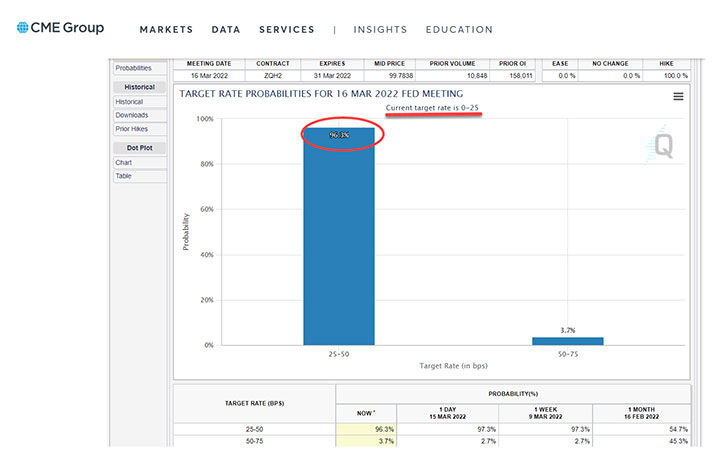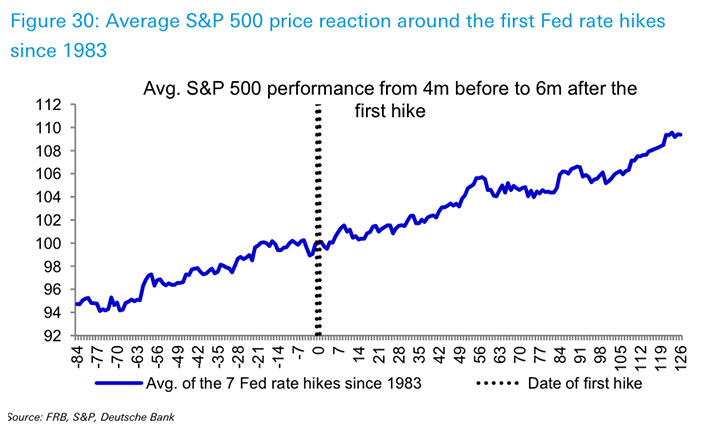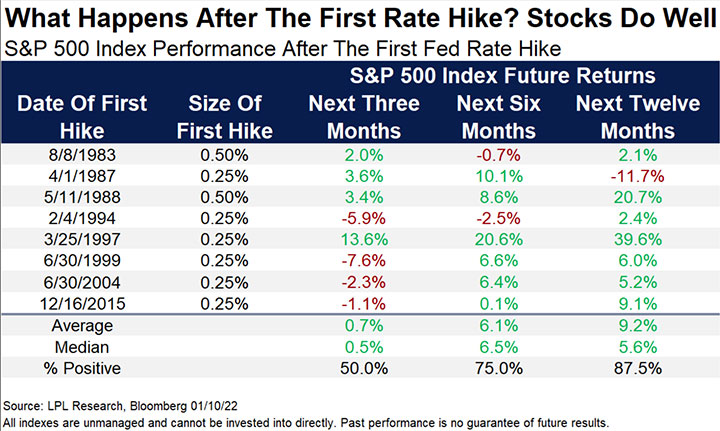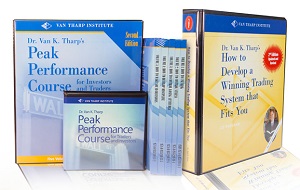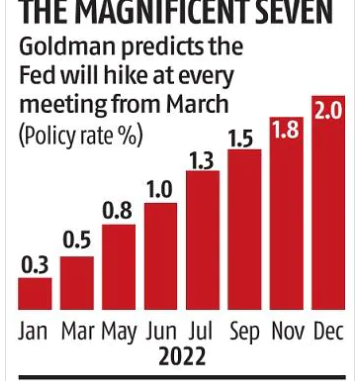
What Happens After the First U.S. Rate Hike? By Van Tharp Trading Institute
By the time you read this, the Federal Open Market Committee (FOMC) is almost a lock to have raised interest rates for the first time since my dad’s birthday in 2018 (that’s December 19th, for those of you who don’t know him well). I said that it is almost a lock that we get a rate increase today and here’s why: Traders who are hedging positions or speculating on the FOMC outcome currently (as of pre-market Wednesday) give the Fed a >96% probability for raising rates by one quarter of a percentage point or 25 basis points, as shown by the CME Group FedWatch Tool below.
That last raise in December 2018 precipitated an 8% selloff in just four short days the S&P 500. For context, that’s a much bigger than any four-day decline that we’ve seen in the current Ukraine invasion.
But we’re not here to look at the last raise. We’re here to look at what happens when a new round of interest rate increases starts. Said another way, what can history tell us about the start of an interest rate hiking cycle? But first as the genie in Disney’s Aladdin movies said, “There are a few, uh, provisos, a, a couple of quid pro quos…”
Namely, with a full-on war continuing in the Ukraine, additional tragic turns could override any analysis here in both the short and long-terms. Similarly, if a correction of supply chain issues doesn’t slow or level out inflationary momentum, other macroeconomic issues, like dreaded stagflation (continued increasing prices without economic growth) could override other historical trends. So, with those contingencies understood, what does historically happen after that first hike?
Is the Anticipation Worse than the Actual Event?
I’m sure you’ve seen vignettes in real life and in shows where the little kid is about to get an injection in the arm (or the rear) and leading up to it, they worry and worry over how much it will hurt.
Tears are shed. Words of comfort are offered by parents or medical professionals and are promptly ignored. And, of course, more tears. Then the injection comes and goes, and in the aftermath, the child is met with the ubiquitous response, “Now that wasn’t so bad, was it?”.
The collective mood of stock market participants today is much like the little kid in the doctor’s waiting room, only in this time the one getting ready to administer the “medicine” is the Jay Powell-led FOMC, and the medicine that the economy needs to combat inflation is a rate hike. Or more precisely, a series of rate hikes.
And while the markets have been dreading this first bump up in rates, recent history has shown us that the first-rate hike has generally led to “just a little pinprick” (to borrow from Pink Floyd) in the first three months, followed by more stock market upside in the following year.
What Happens to Stocks Before and After the First-Rate Hike?
In 2015, Deutsche Bank looked at what happened the last seven times the Fed went from a posture of easing to the first-rate hike. Here’s what typically happens: The first-rate hike sets that market back temporarily but is not enough to slow down the momentum that has been building for quite some time (that will take multiple rate hikes). So, after a pullback, the market then soldiers on to new near-term highs. Here is a composite of all seven occurrences:
When we add in the 2015 hike itself, we see that the effect was the same – a slight pullback after three months and then a significant move up 12 months after the first-rate hike:
We have so many external influences that could impact markets – the continuing uncertainty and tragedy in Ukraine, and supply chain recovery questions, and how they’ll impact inflation (especially in light of the new lockdowns this week in China) – there are issues that could easily override the consequences of FOMC actions. But history tells us that the first Fed rate hike is NOT the thing that should drive our short and mid-term investing decisions. So, there’s one less thing to worry about.
Van Tharp Trading Institute Home Study Courses

